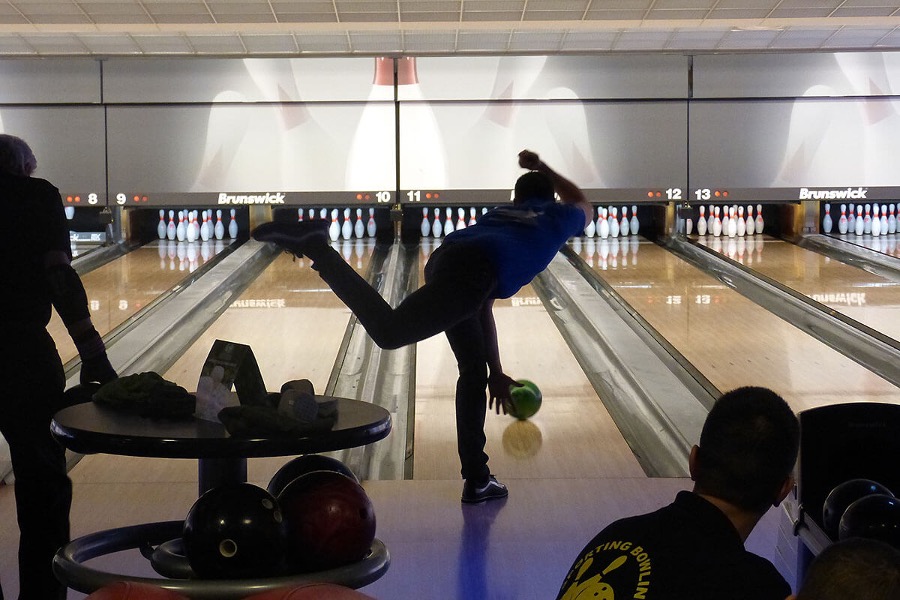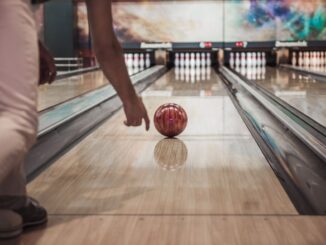
In any sport, the main goal is to win. No one ever remembers who got second place, and history only has space for the winners. The same thing is true in bowling. Sure, it pays off to have good sportsmanship, because that’s how people will like you. But still, you shouldn’t forget the main goal that’s waiting at the finish line, which is victory.
The teams who get first place get the most awards, and nothing feels better than being rewarded for your hard work and training. All of that being said, we’ll cover what some excellent training tips to pay attention to when you’re getting ready for a new season are.
The best exercise for hip movement
The strongest people in the world are strongmen. They do feats we all think are impossible. Deadlifting 500 kilograms is something that only superman can do, as well as Eddie Hall, who set the record. When you ask all of these people where their power comes from, they all say it comes from the legs and the hips. When you think about it, they’re spot on. View this link for more exercises http://www.exercisemenu.com/bowling-workout-routine/.
The muscle above your knee is called the quadriceps. It’s the largest muscle in the entire body. The tendons around the side of the knees can carry the weight of a car without breaking. Our bodies are truly a marvel of biology.
That means, when you look for fast and powerful motions like the hip drive in bowling, you shouldn’t look further than the kettlebell swing. This is an exercise that activates your entire body. It’s a weird weight that’s perfectly suitable for bowlers to develop a fast hip drive. It resembles a ball with a handle on top of it. After a few sessions of swinging, you’ll get the hang of it.
To see positive results, you need to train for 12 minutes, two times per week. That’s a total of 24 minutes. Everyone has the time, and the benefits are outstanding. You train your fast-twitch muscle fibers in the glutes, hamstrings, quads, lower back, shoulders, and forearms.
That’s the same as doing a full military workout, which is why the Russian special forces use kettlebells for conditioning. Start by doing ten swings per session, and increase the number each time. The recommended starting weight is 24 kilograms, but depending on your level, you could pick a lower or higher weight.
Lofting the ball

After you nail the strength and conditioning part, it’s time to focus on technique. Everyone knows that winners practice their technique for hours and hours in order to master it. The same principles hold true in every sport.
The martial arts masters in the east spend their entire lives on mastering a few techniques, and we think of them as the most devoted people on the planet. The same kind of mentality is present in the Olympics and all stages of physical competition. Click here to read more. You should know that when the league starts, you’re going to have to make a lot of adjustments.
The typical ones are left to right adjustments. But what should you do when the ball starts to hook too early in the pins? Well, lofting might be the secret that sets you apart from everyone else. Before we cover the exercise, let’s make it clear what lofting shouldn’t look like. It’s not supposed to be you throwing the ball at chest height, breaking the alley, and then paying for the repairs.
It’s a split-second release that helps the ball glide perfectly and hit angles more efficiently. To master the release, put a rolled-up towel past the foul line. The perfect distance is 12 inches, but if you keep hitting the towel, bring it back a few. As you go through the delivery, pay attention to your knees.
This move requires a little less knee bend than usual. The correct time to practice this move is when you’re out of season. Doing it on your own is best. If you start training it during a competition phase, you’ll only do more harm than good. Pro athletes say that you need to work hard in silence and let your success bring in all the noise.
Crushing goals

Goals are super important when it comes to the motivation of the entire team during the competition and training phases. There are so many benefits when goals are properly introduced. First of all, the whole team’s physical abilities will increase.
That has a direct impact on their quality of life. Additionally, working towards goals teaches self-discipline, and that translates well into life. You get to learn that to succeed in anything. You need to have a specific set of skills.
Mastering different skills make you better at a variety of different activities. Finally, you also have the chance for self-expression and social interaction with others. The recent pandemic showed everyone how our connections make us who we are.
How to set goals?
If you have a coach on the team, then the goal-setting process needs to be between them and the athletes. It’s not always a good idea to set a massive goal in mind and have zero means of achieving it.
Winning the season is a lucrative thing to work towards, but you need small, measurable steps in order to achieve it. Many people make the mistake of not setting the bar low enough so they can start. Each small goal you achieve is like a stepping stone that only raises the team higher.
Diversifying the goal-setting process is a great way to keep everyone engaged. Some of the tasks will be easily attainable, and some of them will be hard. When challenges vary in difficulty, it makes it more interesting for the entire team.
Everyone will try to work harder on their weaknesses, and it will bring you all together. Having a strong mental game and not giving up when you start losing is also important. Remember to be humble in both victory and defeat.



